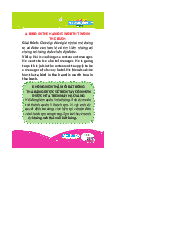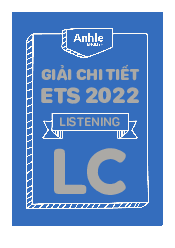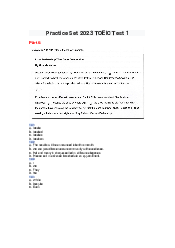

Preview text:
UNIT 14: BANKING Choose the best answer:
1. _______are certificates of debt issued by governments or companies to raise money. a. stocks b. shares c. capital d. bonds
2. ________ is when one company offers to buy or acquire another one. a. merger b. takeover bid c. loan d. deposit
3. ________ is all the investments owned by an individual or organization. a. portfolio b. stockbroking c. returns d. interest
4. ________ is the ending or relaxing of legal restrictions. a. merger b. bankrupt c. deregualtion d. conglomerate
5. ________ banks work with big companies, giving financial advice, raising capital by sisuing
stocks or shares and bonds, arranging mergers and takeover bids, and so on. a. Investing b. Investor c. Investment d. Invested
6. ________ individuals can also use private banks which provide them with banking and investment services. a. Wealth b. Wealthy c. Wealths d. Weal
7. In the USA, many banks went _______ following the Wall Street Crash in 1929. a. banking b. bank c. bankruptcy d. bankrupt
8. There were regulations in the US, Britain and Japan that prevented commercial banks ______
doing investment banking business. a. from b. for c. in d. at
9. Glass-Steagall ___________ in 1999. a. repealed b. was repealed c. was repealing d. has been repealed
10. Large banks became international conglomerates ______a complete range of financial serivces. a. offered b. offer c. are offering d. offering
11. Islamic banks do not pay interest _____ depositors or charge interst to borrowers, but invest
_____ companies and share the profits (or losses) with their depositors. a. at -in b. to - in c. on - with d. with- at
12. Some car ________, food retailers and department stores now offer products like personal
loans, credits cards and insurance. a. manufacturer b. manufacture c. manufacturers d. manufacturing
13. _______these are not banks but non-bank financial intermediaries. a. Technician b. Technique c. Technical d. Technically
14. When American house prices began to fall in 2007, many ‘subprime’ bowrrowers defined
____ those with poor credit ratings and consequently a high risk ____ default. a. as - of b. in - of c. with - at d. for - at
15. MBs and CDOs give their buyers the right ______the payments on the _______mortgages. a. receiving - underlying b. to receive- underlying c. to receive- underlied d. to receive- to underlie
16. They believe that house prices would continue ________. a. to rise b. rising c. rised d. A&B are corrcet
17. When many subprime borrowers stopped _____, the value of subprime related securities fell ______. a. pay - dramatically
b. to pay – dramatic c. paying - dramatically d. paying - dramatic
18. Many banks in the USA, Britain and elsewhere lost billions of dollars ______ their MBSs. a. on b. beyond c. in d. at
19. It is estimated that banks around the world will eventually have to write ______ $1.5 trillion of worthless subprime MBSs. a. with b. at c. on d. off
20. The losses destroyed much of the capital of the world banking system, leading _____ a
credit crisis or a ‘ credit ______’ a. to - interest b. with - bunch c. to - crunch d. at - crunch Answers: 1. D 2. B 3. A 4. C 5. C 6. B 7. D 8. A 9. B 10. D 11. B 12. C 13. D 14. A 15. B 16. D 17. C 18. A 19. D 20. C




